 As far back as the year 1000, the Norwegian king, Olav den Hellige, forbade everyone who was not Christian to live in Norway. I the late 16th century there are references to the Jews driven out of Spain and Portugal. Jews were allowed to settle in duchies of Slesvig-Holstein from 1620. They were granted freedom of religion and, in 1630. the king gave them permission to travel freely and engage in trade in Denmark and Norway.
As far back as the year 1000, the Norwegian king, Olav den Hellige, forbade everyone who was not Christian to live in Norway. I the late 16th century there are references to the Jews driven out of Spain and Portugal. Jews were allowed to settle in duchies of Slesvig-Holstein from 1620. They were granted freedom of religion and, in 1630. the king gave them permission to travel freely and engage in trade in Denmark and Norway.
The first proper Jewish settlement in Norway took place in the 19th century. In June 1892, the first Jewish community was established in Christiania (now Oslo). At this time there were 214 Jews in Norway. The same year, fixed times for prayers were set and a place was rented to be used as a synagogue. Between 1900 and 1910, there were four small Jewish communities in Christiania at the same time.
Over the next 30 years, the number rose to 1,457. The immigrants came from Eastern Europe and the reasons for this great immigration was The First World War, persecution of Jews and general suffering in Europe. By the end of the 1930s about three-quarters of the approximately 2,000 Norwegian Jews were affiliated with the congregation in Oslo or else with a smaller congregation in Trondheim.
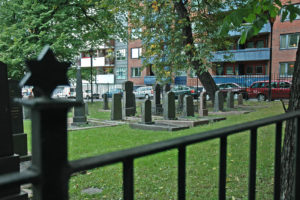 But, in the fall of 1942, the Germans, with support from the Norwegian police, began rounding up the members of the Jewish community for deportation to concentration camps, primarily to Auschwitz-Birkenau. Approximately 800 Jews were deported to Auschwitz, of whom only 25 survived. The Norwegian Resistance and the ordinary citizens of Norway rescued about 900 Jews and hid them until safe passage could be arranged to neutral Sweden. Over 100 Jews served in the Free Norwegian Forces, mostly stationed in Britain.
But, in the fall of 1942, the Germans, with support from the Norwegian police, began rounding up the members of the Jewish community for deportation to concentration camps, primarily to Auschwitz-Birkenau. Approximately 800 Jews were deported to Auschwitz, of whom only 25 survived. The Norwegian Resistance and the ordinary citizens of Norway rescued about 900 Jews and hid them until safe passage could be arranged to neutral Sweden. Over 100 Jews served in the Free Norwegian Forces, mostly stationed in Britain.
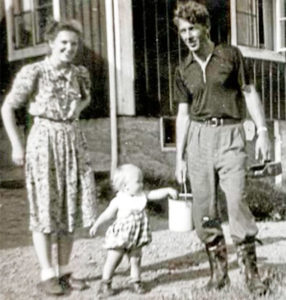 Alf Tollef Pettersen, Gerd Julie Bergljot Pettersen, Reidar Larsen and Rolf Alexander Syversen were responsible for operation “Carl Fredriksen Transport”, a codename for organized smuggling of Jews across the border to Sweden. In six weeks of the operation led by the four Norwegians. The operation started on November 28, 1942, two days after three of four deportations from Norway were conducted with a total of 577 Jews on board. Jews crossed the border to Sweden. It was the single biggest relief operation for refugees during the World War II in Norway. Carl Fredriksens Transport was named after Norway’s King Haakon VII whose real name was Christian Frederik Carl Georg Valdemar Axel. Alf Tollef Pettersen, who had been fired from the Norwegian police force for refusing to pledge loyalty to the Quisling regime, was hired to manage transportation and was intimately familiar with the roads from Oslo to the border to Sweden through Østfold.
Alf Tollef Pettersen, Gerd Julie Bergljot Pettersen, Reidar Larsen and Rolf Alexander Syversen were responsible for operation “Carl Fredriksen Transport”, a codename for organized smuggling of Jews across the border to Sweden. In six weeks of the operation led by the four Norwegians. The operation started on November 28, 1942, two days after three of four deportations from Norway were conducted with a total of 577 Jews on board. Jews crossed the border to Sweden. It was the single biggest relief operation for refugees during the World War II in Norway. Carl Fredriksens Transport was named after Norway’s King Haakon VII whose real name was Christian Frederik Carl Georg Valdemar Axel. Alf Tollef Pettersen, who had been fired from the Norwegian police force for refusing to pledge loyalty to the Quisling regime, was hired to manage transportation and was intimately familiar with the roads from Oslo to the border to Sweden through Østfold.
 About ten truckloads went to the border and back in the dark of night, mostly with headlights off. By mid-January, the network had been infiltrated by Norwegian collaborators and had to be shut down. Pettersen had set up a whole system of signals involving branches, twigs and the like. These were to be placed along the route and would signal either danger or a free passage. Gerd and Alf Pettersen themselves were forced to flee to Sweden after their escape operations were compromised by two infiltrators during one of the missions in January 1943. Rolf Syversen was taken to Trandum Forest and executed in November 1944.
About ten truckloads went to the border and back in the dark of night, mostly with headlights off. By mid-January, the network had been infiltrated by Norwegian collaborators and had to be shut down. Pettersen had set up a whole system of signals involving branches, twigs and the like. These were to be placed along the route and would signal either danger or a free passage. Gerd and Alf Pettersen themselves were forced to flee to Sweden after their escape operations were compromised by two infiltrators during one of the missions in January 1943. Rolf Syversen was taken to Trandum Forest and executed in November 1944.
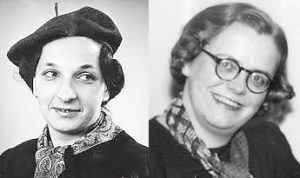 A Jewish Children’s Home in Oslo established in 1939 for Jewish refugees, was under threat by the Nazis in 1942. The director, Nina Hasvold (née Hackel) had lost 8 of the children to deportation and received news that the rest of the children would be taken. Nic Waal, a psychiatrist helped her to take the remaining 13 children over the border into Sweden, where they survived the holocaust. The two women divided the children into two groups. Waal took the first group in her car, while Nina stayed with the other group until they too could be taken to safety. The women dyed the hair of the girls from black to blond. From their temporary hideout, the children were taken in groups by a taxi driver.
A Jewish Children’s Home in Oslo established in 1939 for Jewish refugees, was under threat by the Nazis in 1942. The director, Nina Hasvold (née Hackel) had lost 8 of the children to deportation and received news that the rest of the children would be taken. Nic Waal, a psychiatrist helped her to take the remaining 13 children over the border into Sweden, where they survived the holocaust. The two women divided the children into two groups. Waal took the first group in her car, while Nina stayed with the other group until they too could be taken to safety. The women dyed the hair of the girls from black to blond. From their temporary hideout, the children were taken in groups by a taxi driver.
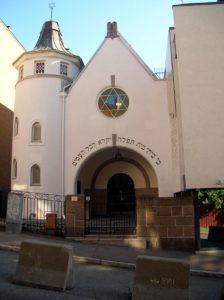 After the end of the war, the Jewish community in Oslo was re-established by returning refugees.
After the end of the war, the Jewish community in Oslo was re-established by returning refugees.
They found the synagogue in Oslo unharmed: it had been used as a storage place for Nazi literature and confiscated Jewish belongings. Even the Torah scrolls were undamaged. But the community was much diminished; there were long periods without a rabbi and little spiritual leadership. In the late 1970s, however, a serious revival of the community began, and many Jewish organizations now flourish.
About 1,400 Jews live in Norway today. There are two synagogues in Norway, one in Oslo and one in Trondheim. The Oslo Synagogue runs a full cradle-to-grave range of facilities, including a kindergarten. They both also have an outreach program to gather still functioning groups in Bergen and Stavanger.
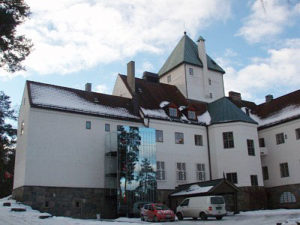 On August 23, 2006, Norway opened its Center for Studies of the Holocaust and Religious Minorities, a joint project of the Norwegian government and the country’s Jewish community, which will be devoted to the study of the Holocaust and other genocides. The museum and research center are housed in the Villa Grande, which was the residence of Vidkun Quisling, the Nazi collaborator who served as the president of Norway from 1942 until the end of the war. At the war’s end, Quisling was tried and executed for treason.
On August 23, 2006, Norway opened its Center for Studies of the Holocaust and Religious Minorities, a joint project of the Norwegian government and the country’s Jewish community, which will be devoted to the study of the Holocaust and other genocides. The museum and research center are housed in the Villa Grande, which was the residence of Vidkun Quisling, the Nazi collaborator who served as the president of Norway from 1942 until the end of the war. At the war’s end, Quisling was tried and executed for treason.